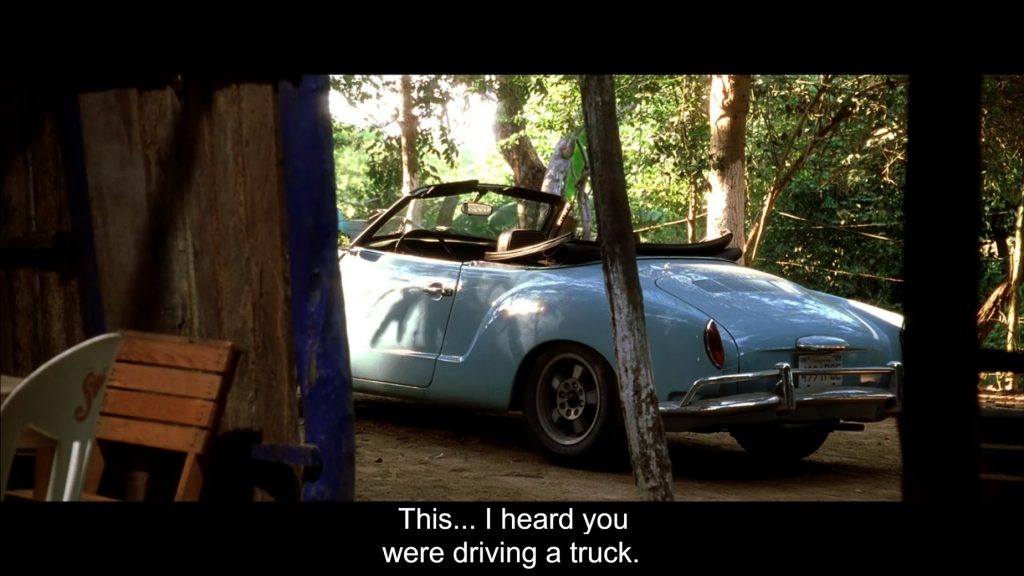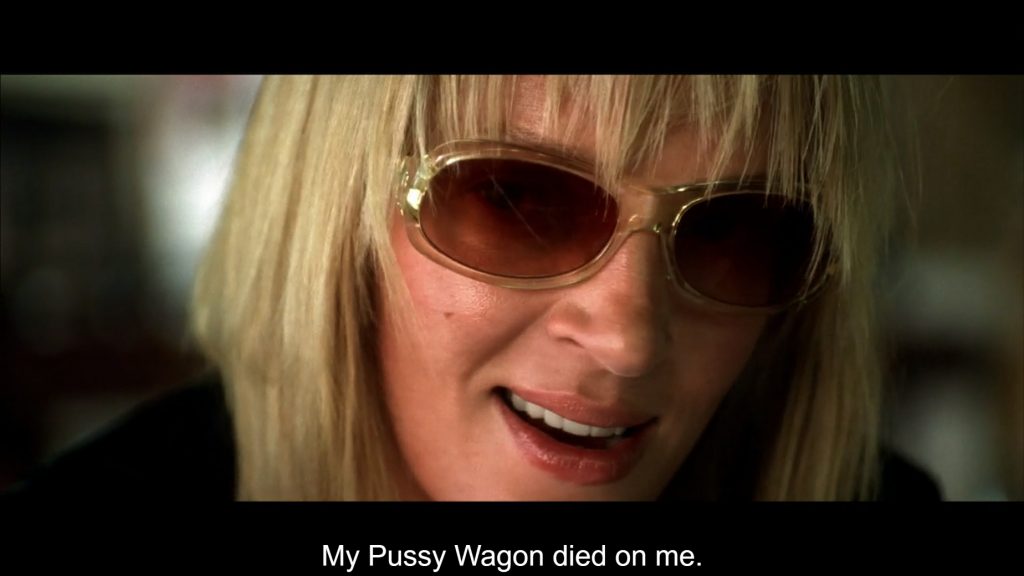Todd Berliner premises his discussion of The Godfather Part II on the belief that “film critics normally view sequels as exploitative products that cash in on the popularity of earlier blockbusters.” In addition to embracing violence, sexuality and “low” culture references, the Kill Bill franchise embraces the exploitative potential of sequels.
Popular website TV Tropes describes “hanging a lampshade,” or “lampshading,” as a way of dealing with an inconsistent, unrealistic or otherwise offensive story element by “calling attention to it and simply moving on.” Basically, it’s less fun to criticize an offending element when you know the writers are in on the joke. Kill Bill Vol. 2 hangs its lampshades liberally. In doing so, it patches inconsistences between the movies. These lampshades praise fans for noticing errors, yet reassure them that the writers are aware of the problems, so viewers don’t need to worry about the problems anymore. This allows fans of Kill Bill Vol. 1 to enjoy Vol. 2 to a greater extent. From Berliner’s cynical perspective of other critics’ cynical perspectives, this amounts to a greater payoff for Vol. 2.


By drawing attention to Beatrix’s new wheels, the film rewards fans for paying attention- for remembering the Pussy Wagon and for noticing that this blue convertible is not quite it.
Another shade is hung when Bill visits Budd. The scene starts after Bill has presumably related the events of Vol. 1 to his brother. Budd’s first question: “You tellin’ me she cut her way through 88 bodyguards ‘fore she got to O-ren?” It’s a reasonable question that has surely preoccupied many viewers of Vol. 1– were so many people really slayed in that scene?
Bill responds that there weren’t really 88 bodyguards in “The Crazy 88,” they just call themselves that.
“How come?” asks Budd.
“I don’t know,” Bill says. “I guess they thought it sounded cool.”
I don’t know if that’s a convincing answer, but the amount of dialogue devoted to the issue ends up amounting to a flashy shade.
Kill Bill Vol. 2 starts with a twist: the Bride was attacked at her wedding rehearsal, not her wedding. This twist adds realism to the rehearsal’s events, but a new problem arises: what about the dress? In Bill’s words, “I don’t believe I’ve ever heard of a wedding dress rehearsal before.” Bea’s fiancé offers a lame excuse, cementing his characterization as a lame excuse and acknowledging another judgement of the work’s realism. This judgement is a compliment- it means viewers are judging Tarantino’s work on par with reality. Winking at this simply satiates the paying audience, and encourages them to come back for more.
